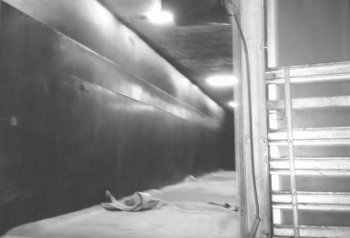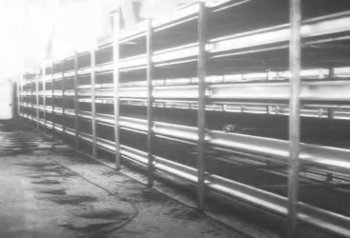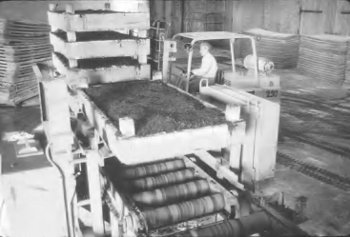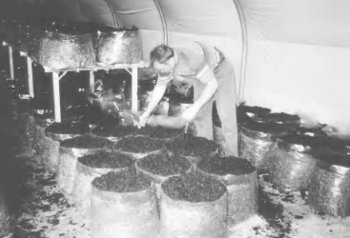Growing Systems (Phase II)
Once Phase I is complete, the substrate will be filled into a system for Phase II substrate preparation and to grow the mushrooms. Phase II takes place in one of three main types of mushroom-growing systems, depending on the type of production system used. The difference in the mushroom-growing systems is the container in which the crop is processed and grown. With a multizone system, the substrate is filled into boxes or trays and moved from room to room as shown in Figure 5. Each room has a different heating, ventilating, and airconditioning (HVAC) system designed for a specific stage in crop development. A single-zone system — or bed farm — consists of several large, stacked beds or shelves within a single room (Figure 6). The substrate is filled into these beds after Phase I, and the crop remains in the one room throughout the process. Bulk pasteurization or tunnels are systems where the substrate is filled into «tractortrailer»–type bins (called tunnels) with perforated floors and no covers on top of the compost (Figure 7). Phase II and, occasionally, the next phase of growing are carried out within these tunnels. The substrate may then be filled into a tray, shelf, or even plastic garbage bags for the remaining part of the process (Figure 8).

Figure 5. A tunnel used for Phase II and/or Phase III (spawn-growing) systems.

Figure 6. Single-zone, bed, or shelved farm. These shelves are aluminum; many farms have wooden bed boards.

Figure 7. Trays used for a multizone system, moving through a tray-filling line.

Figure 8. Bag-growing system often uses substrate prepared in a bulk composting facilities.
4373 view.